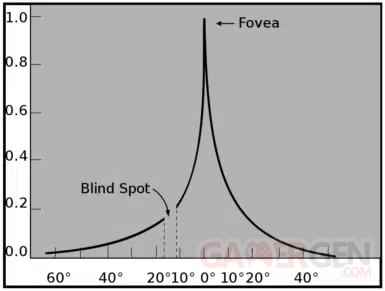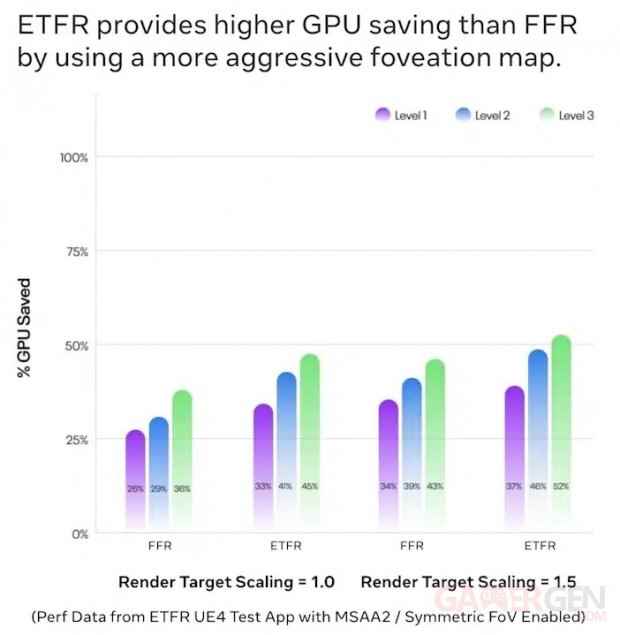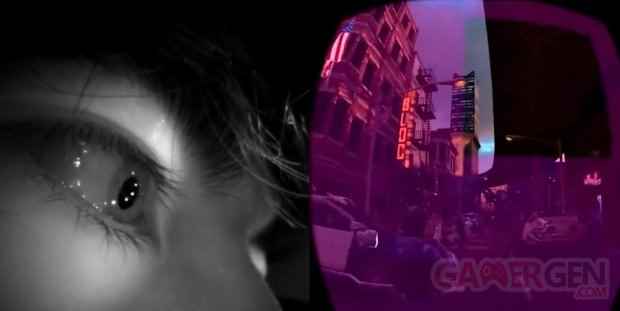the Meta Quest Pro supports foveal renderingin other words, the headphones analyze where you are looking to offer you the best image quality, while what you are not looking at is put in low definition. This saves significant resources. Absent from Meta Quest 2but indeed present on the Quest Pro, eye tracking (eye tracking) allows to refine this functionalitybased not on the periphery of your vision (the edges of your lenses), but on the position of your eyes. But how exactly does eye tracking improve performance?
In reality, to reach a highly conclusive level, it would require real-time, latency-free eye tracking with an incredibly high screen refresh rate. Let’s just say it, it’s not for now. Disappointed ? U.S. too, but there is still something to do with current technology.
Before getting to the heart of the matter, let’s ask ourselves the question of how our vision works, if only to better understand what is to come. In humans, vision is incredibly good, but only about 3°. Outside, thehe image we see is less defined, but it is our brain that works tirelessly to make us believe in a certain homogeneity. So he plays tricks on us like the DLSS 3.0. The two technologies that will be presented to you here (FFR/ETFR) are based on what our own vision does, make us rest by saving precious resources.

the FFR (Fixed Foveated Rendering) is to make the edges of your lenses less definedit has been used since theOculus Go and is still present on all helmets Meta. 5 notches are available (0 = Stop1 = Low2 = Medium3= High4= Very High) and the higher the value, the more you will feel the effect of blur and pixelation on the sides of the lenses, but the smoother your application or game will be. It is from level 3 that you will really feel the drop in definition on the sides.
the ETFR (Eye Tracking Foveated Rendering) uses the same principle, but with eye tracking, and it is not 5 notches that are offered, but 4 (levels 0, 1, 2 and 3). With level 1, the periphery is rendered with four times fewer pixels, while with level 4, it is with sixteen times fewer pixels. Thus, the higher the definition, the greater the savings.

According Metathe FFR would save between 26 and 36% performance, compared to 33% to 45% for theETFR. If that’s not clearly a real leap forward, at 1.5x resolution than the default, we go to FFR from 34% to 43% and from 36% to 52% for theETFR. It takes about 9% difference between the two technologies. You will have understood it, it is not with that that we will soon be able to play Half Life: Alyx in 8K on our stand-alone headsets! Apart from this joke, theETFR allows, unlike the FFRnot to feel the drop in definition. To choose, theETFR still allows you to save a little more resources while offering you better image quality.
If we look on the side of PlayStation VR 2the advantage of FFR is much more important, going up to 60% of saving in resources, theETFR (also present) is not to be outdone with its 72% performance gains. How to explain such a difference ? The architecture of GPUs and their powers being very different, it is easier for the GPUs of sony to calculate and refine the rendering. do not forget that Meta uses in-house technology while sony use that of Tobii.
Be careful, if you want to play the privacy card and not activate eye tracking, you will not benefit from theETFRalthough you can always fall back on the FFR.
If the Meta Quest 2 still interests you, know that you can afford it at the Fnac, Darty or Amazon for €449.99.
